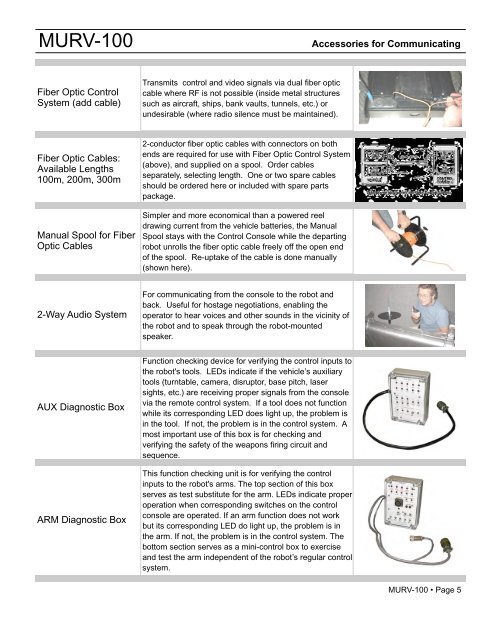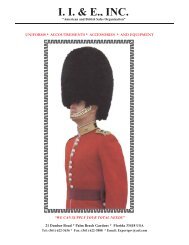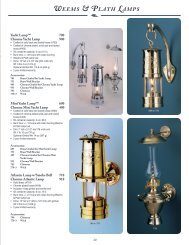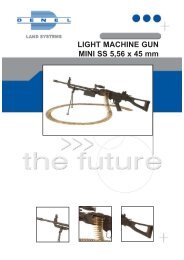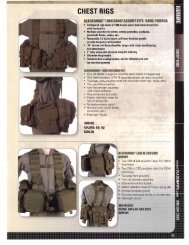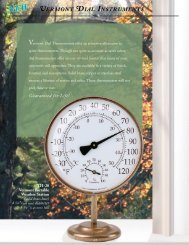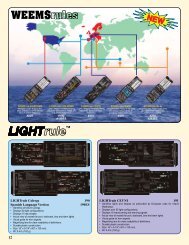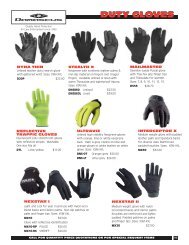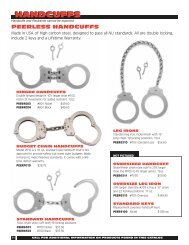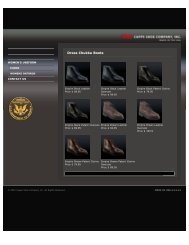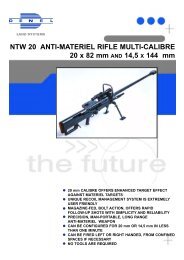You also want an ePaper? Increase the reach of your titles
YUMPU automatically turns print PDFs into web optimized ePapers that Google loves.
<strong>MURV</strong>-<strong>100</strong><br />
Accessories for Communicating<br />
Fiber Optic Control<br />
<strong>System</strong> (add cable)<br />
Transmits control and video signals via dual fiber optic<br />
cable where RF is not possible (inside metal structures<br />
such as aircraft, ships, bank vaults, tunnels, etc.) or<br />
undesirable (where radio silence must be maintained).<br />
Fiber Optic Cables:<br />
Available Lengths<br />
<strong>100</strong>m, 200m, 300m<br />
2-conductor fiber optic cables with connectors on both<br />
ends are required for use with Fiber Optic Control <strong>System</strong><br />
(above), and supplied on a spool. Order cables<br />
separately, selecting length. One or two spare cables<br />
should be ordered here or included with spare parts<br />
package.<br />
Manual Spool for Fiber<br />
Optic Cables<br />
Simpler and more economical than a powered reel<br />
drawing current from the vehicle batteries, the Manual<br />
Spool stays with the Control Console while the departing<br />
robot unrolls the fiber optic cable freely off the open end<br />
of the spool. Re-uptake of the cable is done manually<br />
(shown here).<br />
-<br />
2-Way Audio <strong>System</strong><br />
For communicating from the console to the robot and<br />
back. Useful for hostage negotiations, enabling the<br />
operator to hear voices and other sounds in the vicinity of<br />
the robot and to speak through the robot-mounted<br />
speaker.<br />
AUX Diagnostic Box<br />
ARM Diagnostic Box<br />
Function checking device for verifying the control inputs to<br />
the robot's tools. LEDs indicate if the vehicleʼs auxiliary<br />
tools (turntable, camera, disruptor, base pitch, laser<br />
sights, etc.) are receiving proper signals from the console<br />
via the remote control system. If a tool does not function<br />
while its corresponding LED does light up, the problem is<br />
in the tool. If not, the problem is in the control system. A<br />
most important use of this box is for checking and<br />
verifying the safety of the weapons firing circuit and<br />
sequence.<br />
This function checking unit is for verifying the control<br />
inputs to the robot's arms. The top section of this box<br />
serves as test substitute for the arm. LEDs indicate proper<br />
operation when corresponding switches on the control<br />
console are operated. If an arm function does not work<br />
but its corresponding LED do light up, the problem is in<br />
the arm. If not, the problem is in the control system. The<br />
bottom section serves as a mini-control box to exercise<br />
and test the arm independent of the robotʼs regular control<br />
system.<br />
<strong>MURV</strong>-<strong>100</strong> • Page 5


